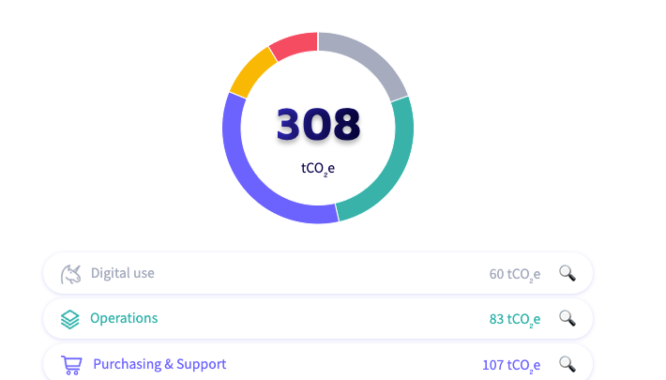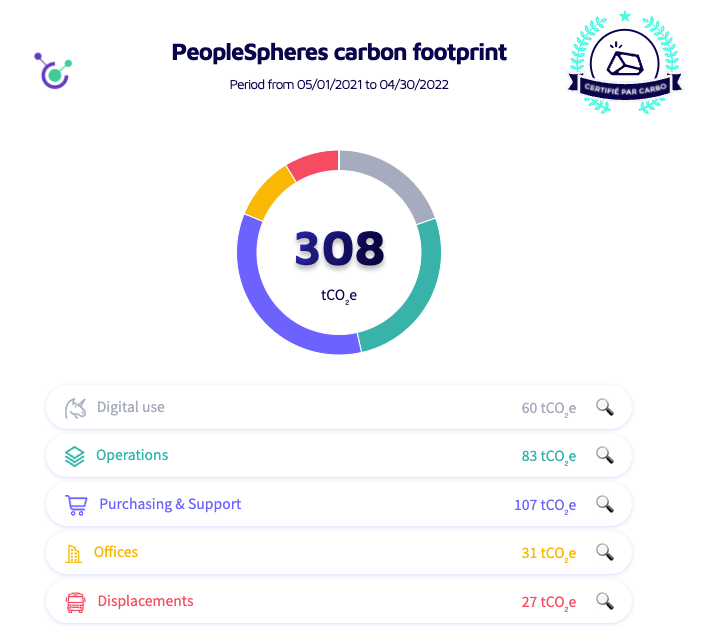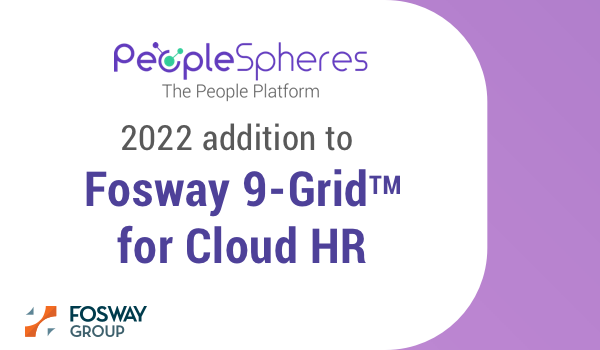
At PeopleSpheres, we don’t just think about our customers, products, and partners but also our environmental impact.
We are often told to limit global warming and that everyone’s involvement is needed, including that of businesses.
PeopleSpheres’ actions have always been done with consideration for the plant, but now we are aware that an active approach is necessary. It is with this momentum that we have implemented an official CSR (corporate social responsibility) strategy.
The first step? Measure our carbon footprint.
How did we do our first carbon assessment? What do the results tell us? Let’s take a look at the important information that this initiative has revealed at PeopleSpheres.
“The relationship with PeopleSpheres is very positive. We have a dedicated contact person who ensures that all issues are properly addressed. The platform evolves significantly and adapts to our requests as much as possible.”
– Jeremy, Renewable energies and environment
Related articles:
– Future of Work: Trends and Insights of HR Management
– How Vitamine T Modernized HR Processes & Cut Costs
What is a carbon footprint?
A carbon footprint is a calculation of all an entity’s greenhouse gas emissions. The result of this calculation makes it possible for managers to see the impact of their business activities on the environment and global warming.
Although it is not yet mandatory for companies in France with more than 500 employees to disclose their carbon emissions, it is strongly recommended. Being aware of its importance, we here at PeopleSpheres have done it.
Regarding employees with more than 500 employees, reporting carbon emissions will be mandatory starting January 1, 2023. “The Regulatory GHG* Report” is being put in place in order to account for all companies’ emissions.
*GHG: greenhouse gas
Why do a carbon footprint assessment?
We already know that we are going through a climate crisis, which has generated an increase of 1.2 degrees Celsius so far according to the Climate Act. In order to remedy this, we need to reduce carbon dioxide emissions, whether initiated by the people themselves, the government or businesses.
Thanks to the carbon footprint measure, we can first know the areas in which we emit the most greenhouse gases. It measures our impact and then compares it with companies in the same sector.
In fact, the carbon footprint is only the first brick, the beginning, of a larger CSR initiative. It makes it possible to carry out a diagnosis of the company’s current practices and makes it easier to identify areas for improvement and projects to be implemented. Acting is good, acting effectively is even better.
Our First Carbon Footprint Assessment
Our first carbon footprint assessment was carried out with a French company named Carbo over a period of one year (May 2021 to May 2022). The benchmarking of the results is based on 251 assessments carried out by Carbo, including 190 assessments of companies from the CAC 40 and NASDAQ, SBF120 and 2,787 reports published by ADEME.
The results of PeopleSpheres’ carbon footprint assessment
In all, 308 tCO2e (tons of CO2) were emitted by PeopleSpheres over the period ranging from May 1, 2021 to April 30, 2022. The breakdown was as follows:

These results correspond to 3.4 tCO2e per employee at PeopleSpheres over the year.
We emit 44% less greenhouse gases compared to companies in the same sector and of the same size as PeopleSpheres.
What do these results mean?
To better understand the results, here is what each category indicates:
- Emissions generated by our operations are 20% lower than companies of our size and in our sector
This includes internal communication (messaging, videoconferencing, etc.), external communication (emails, social media, advertising, etc.), customer feedback, events and deliveries.
- Our activities related to digital use generate 1% less than companies of our size and in our sector.
This includes computers or phones which consume our services and our application, the network which transmits data displayed to our users and finally the serves which hosts our data and other source codes for the requests of our users.
- Emissions generated by our offices are 49% lower than companies of our size and in our sector.
This includes depreciation of office construction and estimated consumption of food, resources, energy, waste, and routine maintenance of the premises.
- The emissions generated by our travel represent 45% less than companies of our size and our sector.
This includes the daily commute of employees and business travel (plane, train, public or individual transportation).
- Finally, our greatest area for improvement would be the footprint related to our purchases and support. Our emissions represent 55% more than companies comparable to ours.
This comes from finished products, raw materials, associated transport, and purchases of services.
Limitations of this approach
Can we say that these results are good? At first glance, it’s not bad. But to answer this question, we have to compare ourselves properly to other companies in the same industry and of the same size as PeopleSpheres . However, not all companies publicly disclose their results, which limits comparisons and company ratings.
For the carbon footprint assessments to be effective, not only do you have to be totally transparent about the results obtained, but also be totally honest with your employees about what they mean.
In addition, consumption and greenhouse gas emissions in remote working are not taken into account in this assessment, which may distort certain results.
Finally, it is worth mentioning that carrying out the first carbon assessment takes a lot of time, energy and resources. You have to be able to organize a plan over time.
What’s Next?
Although, compared to other companies in the sector, PeopleSpheres’ results are generally positive, this does not mean our job is done. Measuring our carbon footprint is only the first step. Various projects are to be implemented hereafter.
Thus, we have put in place a CSR policy which includes social and environmental policy, digital responsibility, and a supplier policy. The purpose of this policy is to clearly notify the objectives, commitments, rights, and duties of everyone towards the CSR initiative at PeopleSpheres.
But that’s not all. We don’t limit ourselves only to internal players. A supplier and partner policy has also been put in place, which covers their CSR commitments. Actions will be implemented to reduce emissions in categories that are too high, in particular the “purchase and support” category, with the purchase of refurbished phones for example.


-360x360.jpg)


